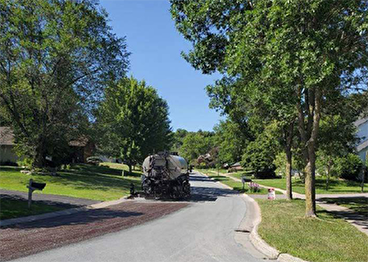
Applying a chip seal to asphalt on low-volume roads is a popular pavement preservation method, but it can cause various problems, including public complaints. New research from the LRRB indicates that in some situations, applying a fog seal after a chip seal can improve asphalt performance—and public satisfaction—cost-effectively.
Loose aggregate can damage vehicles, and public complaints of cracked windshields or rocks tracked from roadways often follow a chip-seal application. There are also concerns that in some roads chip sealing causes stripping, in which the lower layers of asphalt start to disintegrate and damage the upper layers.
The study found numerous benefits of fog sealing. Chip retention improved, reducing or eliminating public complaints. From the estimated increase in pavement life, researchers concluded that the benefits of fog sealing justify its cost. Additional benefits included less need for street sweeping and reduced damage from snowplowing.
Conclusions and findings were summarized into a best practices manual for agencies and contractors. The manual will help users determine if fog sealing is an appropriate choice for a specific road and if it is cost-effective. Other topics include:
- Traffic control plans
- Application rates, equipment, and methods
- Weather considerations and roadway cleanliness
- Cure time, pavement markings, and rumble strips
- Future maintenance plans